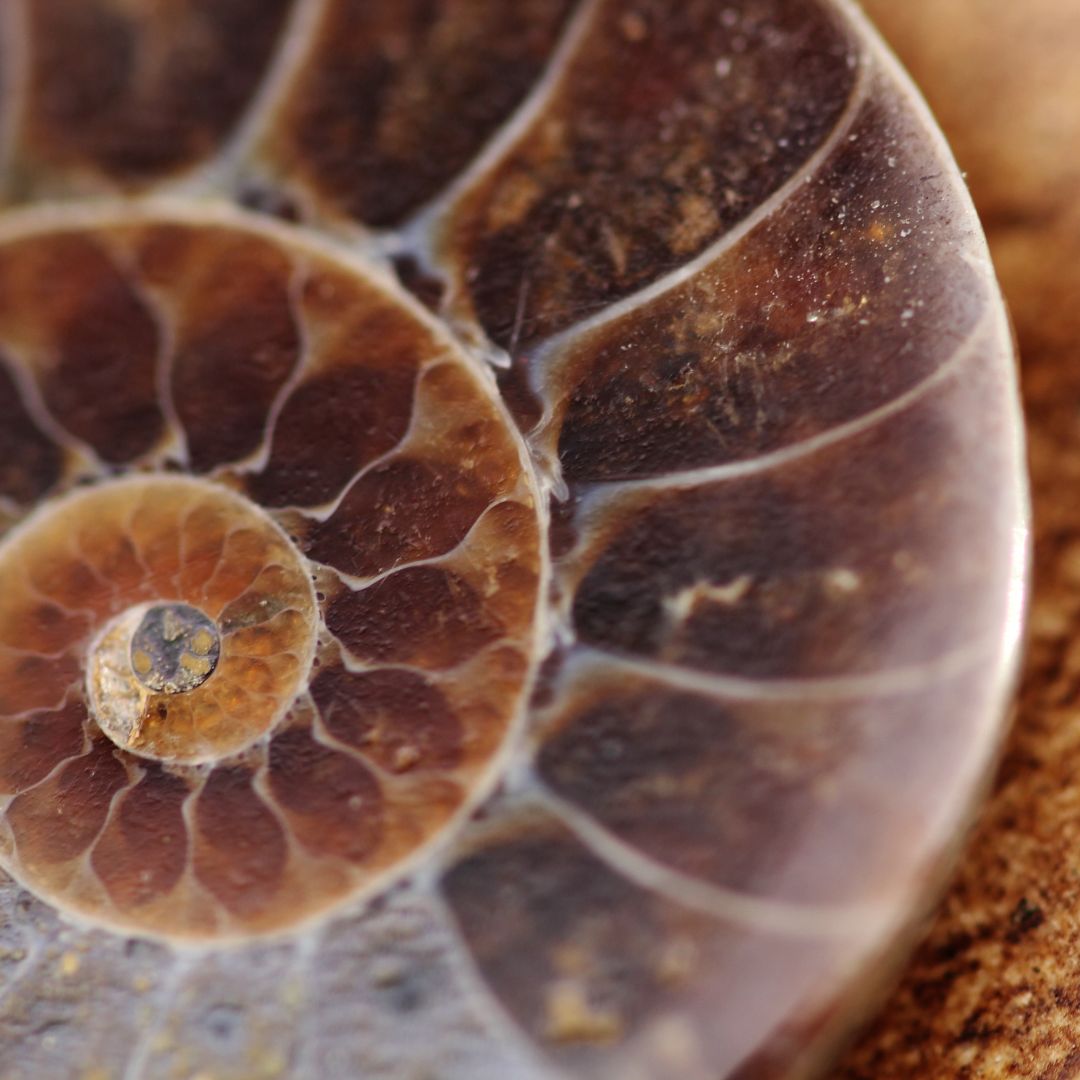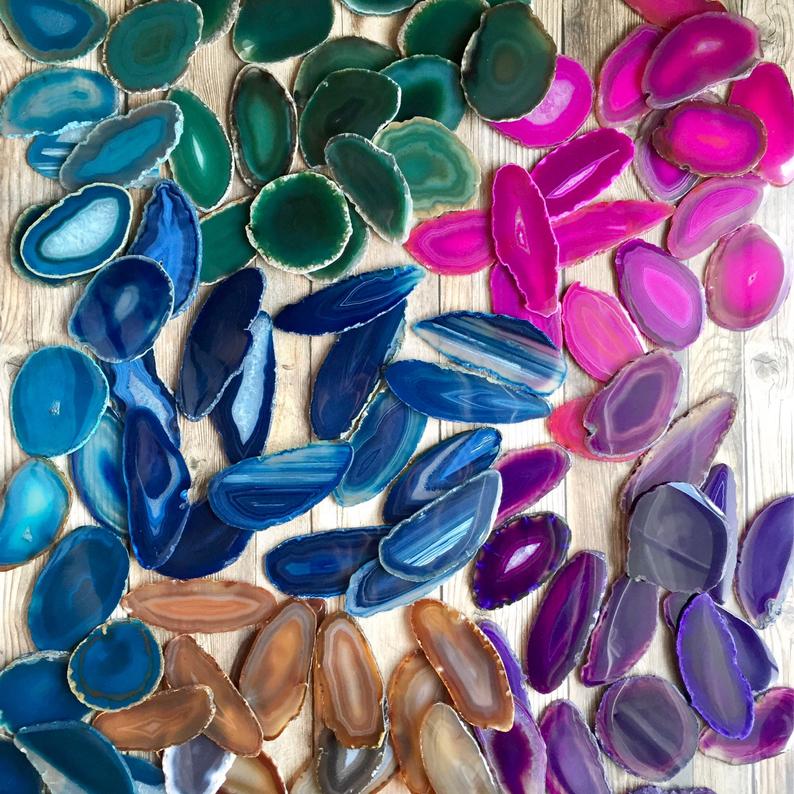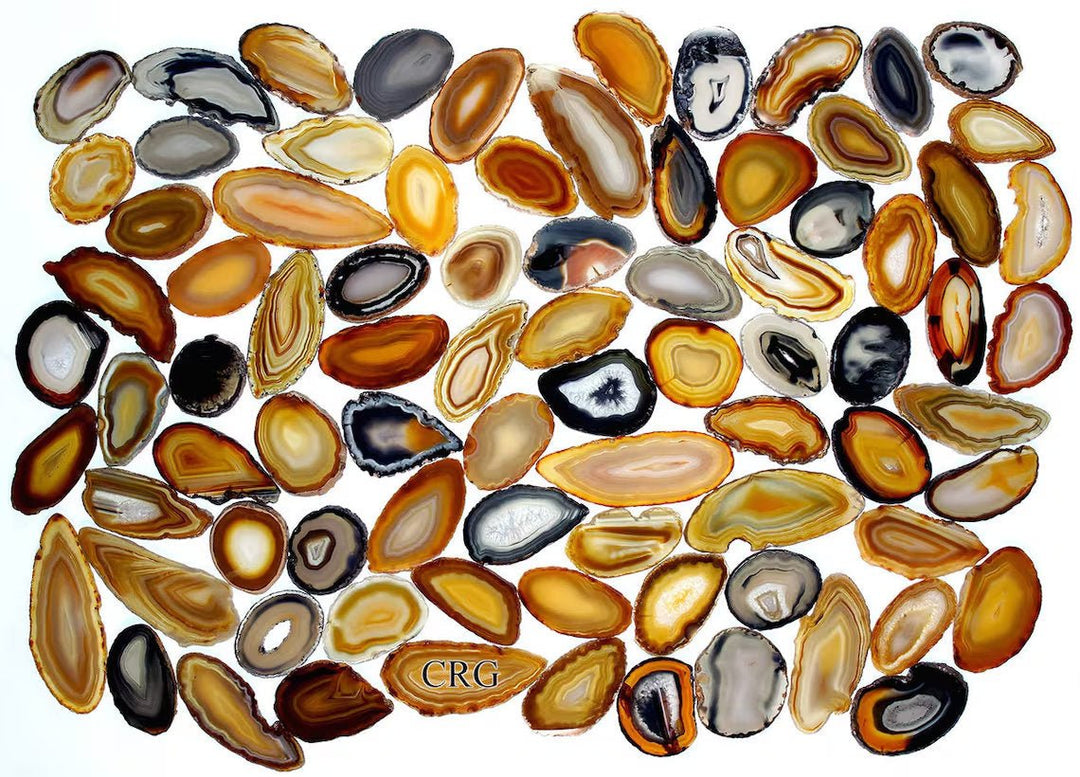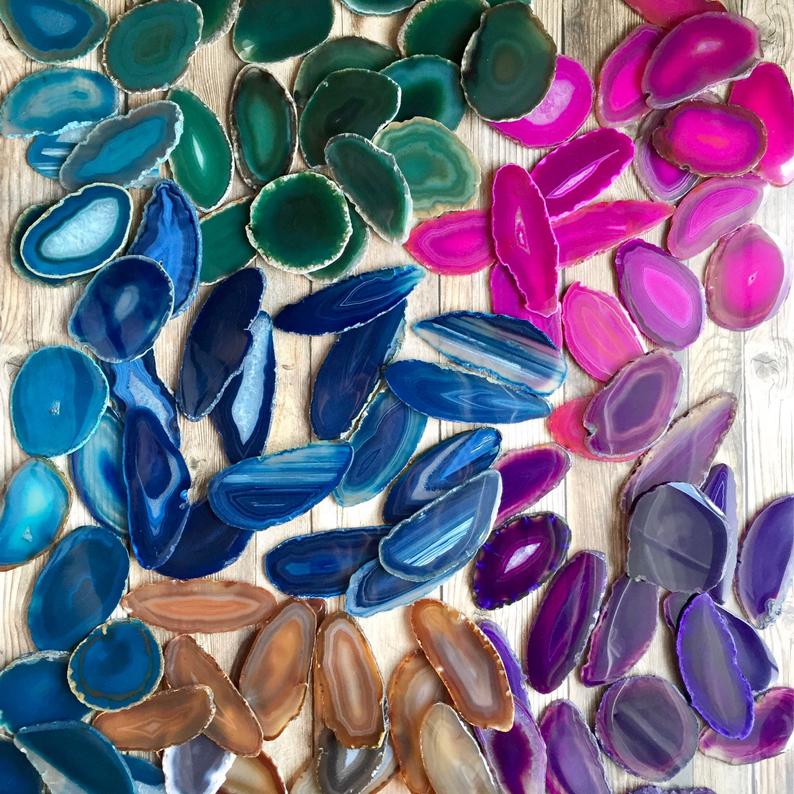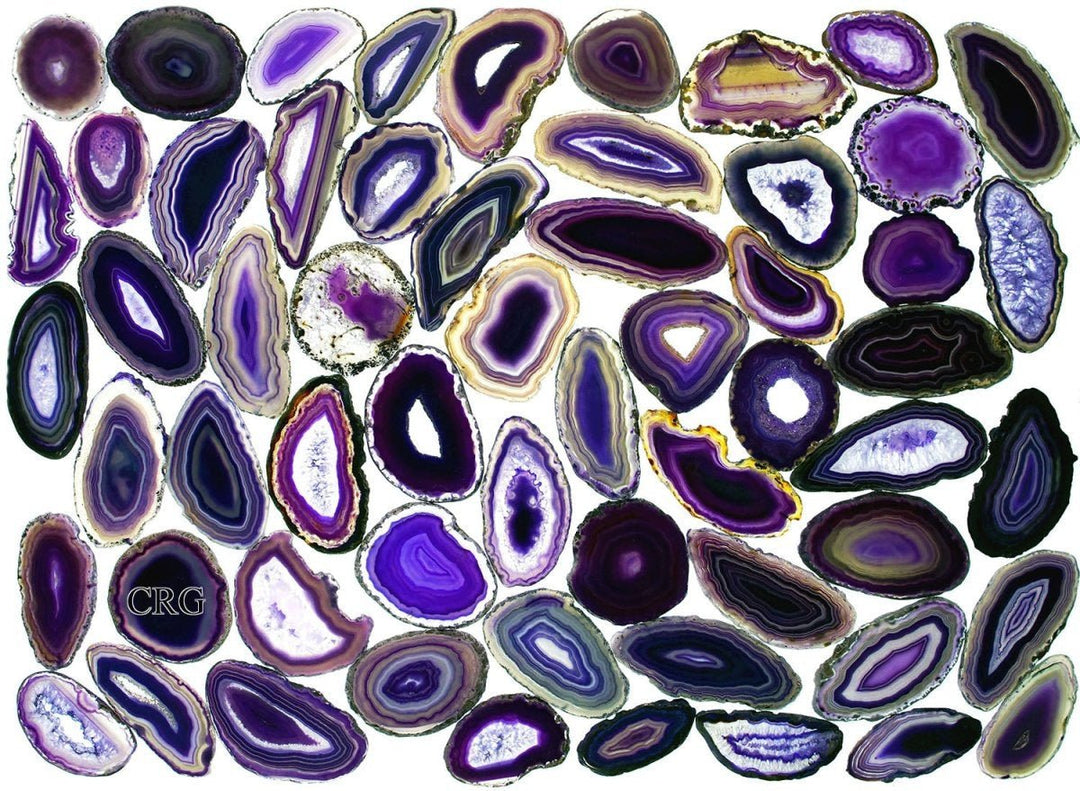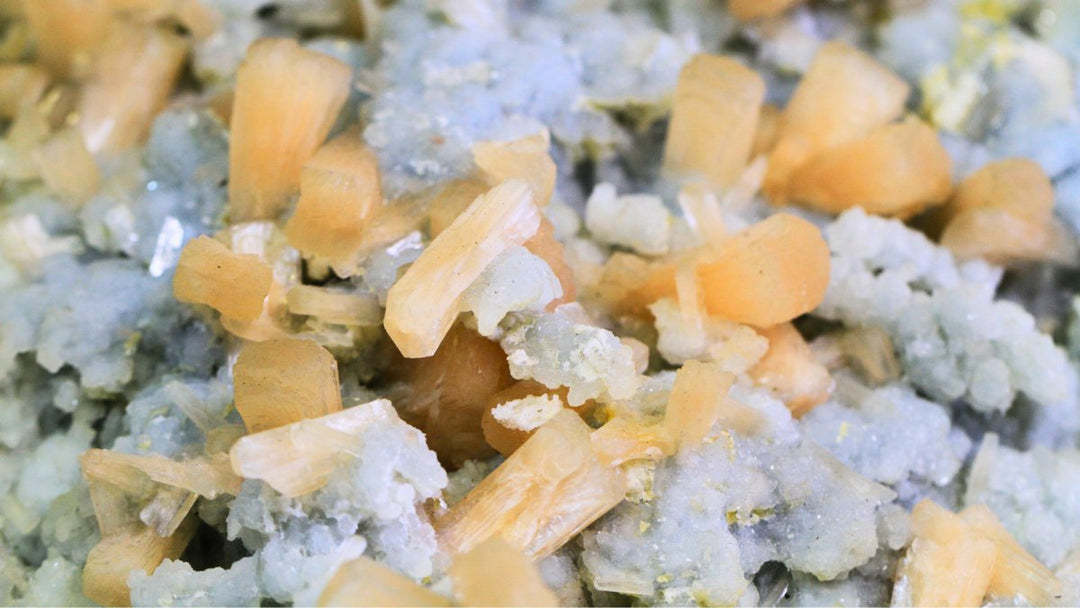Ever wonder about the story behind the alluring spiral of the ammonite? These fossils are the remnants of over 10,000 different marine species that evolved during the Devonian period about 416 million years ago. We call these formerly-living creatures ammonoids (whereas their fossils are ammonites). They were the early relatives of the squid, octopus, cuttlefish, and nautilus.
In the ammonite fossil, one observes a mesmerizing pattern of chambers coiling toward the center. The ammonoid’s squid-like tentacles once extended from this shell, which probably helped the creature glide through the ocean. A thin, tube-like “siphuncle” pumped air throughout the inner chambers, promoting buoyancy underwater. Since ammonoids were marine predators, one can imagine how such buoyancy would aid in the pursuit of prey.
The ammonoids were more than predators: they were survivors. They made it through 3 mass extinctions. Most remarkably, they survived the Permian event, a global warming event caused by extreme volcanic activity about 252 million years ago. The Permian event killed 96% of all marine species, but many species within the ammonoid subclass endured. They thrived for another 186,000 years until they were finally extinguished by the same cataclysm that killed the dinosaurs about 66 million years ago.
Now we hold their shells in our hands. Ammonites have been found all over the planet, most commonly on the shores of the U.K. They are used today as index fossils, which means they can help date other fossils discovered in the same layer of marine rock. Their presence can also reveal valuable information about ancient climates. Scientists reason that if ammonites are present at a particular site, then an ocean must have once covered it. So not only did ammonoids play a key role in ancient marine ecosystems, but their fossils also play a key role in understanding those ancient systems today.


